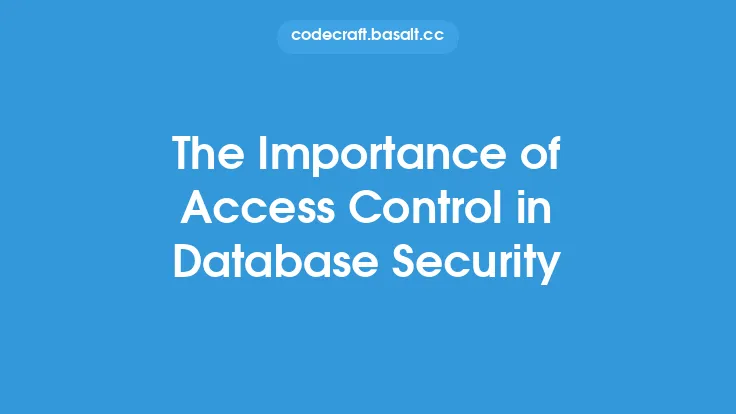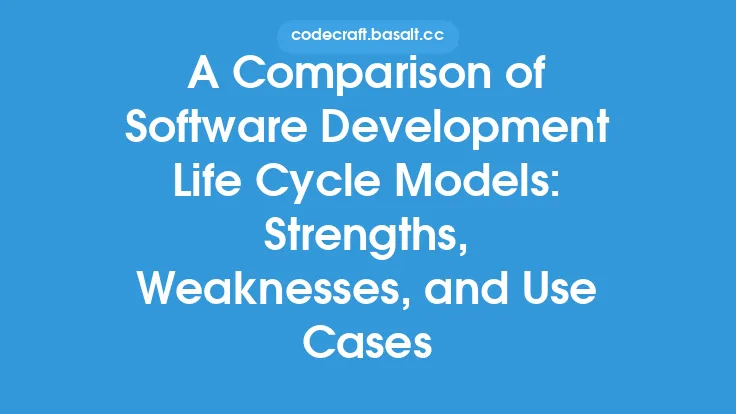Access control is a fundamental concept in cybersecurity, ensuring that only authorized individuals or systems can access sensitive resources, data, or systems. Over the years, various access control models have been developed to cater to different security requirements and environments. In this article, we will delve into the comparison of three primary access control models: Mandatory Access Control (MAC), Discretionary Access Control (DAC), and Role-Based Access Control (RBAC). Understanding the strengths, weaknesses, and use cases of each model is crucial for implementing effective access control mechanisms in various settings.
Introduction to Access Control Models
Access control models are designed to regulate access to resources, data, or systems based on a set of rules, policies, and permissions. These models are essential in preventing unauthorized access, data breaches, and other security threats. The three access control models discussed in this article - MAC, DAC, and RBAC - differ in their approach to access control, policy enforcement, and user permissions.
Mandatory Access Control (MAC)
Mandatory Access Control is a model where access control is enforced by the operating system or a central authority. In MAC, access decisions are based on a set of rules that are mandatory and cannot be changed by users. The model uses a lattice-based approach, where subjects (users or processes) and objects (resources or data) are assigned a security label or clearance level. Access is granted or denied based on the comparison of the subject's clearance level with the object's classification level. MAC is commonly used in military and government environments, where security is paramount, and access control must be strictly enforced.
Discretionary Access Control (DAC)
Discretionary Access Control is a model where access control is based on the discretion of the owner of the resource or data. In DAC, the owner has the authority to decide who can access the resource and what actions they can perform on it. The model uses an access control list (ACL) or a capability list to store permissions and access rights. DAC is widely used in commercial and academic environments, where flexibility and ease of use are essential. However, DAC can be vulnerable to security threats, as users may inadvertently or intentionally grant excessive access to others.
Role-Based Access Control (RBAC)
Role-Based Access Control is a model where access control is based on the roles that users play within an organization. In RBAC, users are assigned roles, and each role is associated with a set of permissions and access rights. The model uses a role hierarchy, where roles can inherit permissions from other roles. RBAC is widely used in enterprise environments, where users have multiple roles and responsibilities. The model provides a flexible and scalable way to manage access control, as roles can be easily created, modified, or deleted as needed.
Comparison of MAC, DAC, and RBAC
The three access control models differ in their approach to access control, policy enforcement, and user permissions. MAC is a strict, lattice-based model that enforces access control at the operating system level. DAC is a flexible, discretionary model that relies on the owner's decision to grant access. RBAC is a role-based model that assigns permissions and access rights based on the user's role within an organization. The choice of access control model depends on the security requirements, environment, and use case. MAC is suitable for high-security environments, while DAC is suitable for commercial and academic environments. RBAC is suitable for enterprise environments, where users have multiple roles and responsibilities.
Advantages and Disadvantages of Each Model
Each access control model has its advantages and disadvantages. MAC provides a high level of security, but it can be inflexible and difficult to manage. DAC provides flexibility and ease of use, but it can be vulnerable to security threats. RBAC provides a flexible and scalable way to manage access control, but it can be complex to implement and manage. The advantages and disadvantages of each model are summarized below:
- MAC: High security, but inflexible and difficult to manage.
- DAC: Flexible and easy to use, but vulnerable to security threats.
- RBAC: Flexible and scalable, but complex to implement and manage.
Use Cases and Implementation
The three access control models have different use cases and implementation requirements. MAC is commonly used in military and government environments, where security is paramount. DAC is widely used in commercial and academic environments, where flexibility and ease of use are essential. RBAC is widely used in enterprise environments, where users have multiple roles and responsibilities. The implementation of each model requires careful planning, policy definition, and enforcement. The use cases and implementation requirements of each model are summarized below:
- MAC: Military and government environments, high-security environments.
- DAC: Commercial and academic environments, flexible and ease of use.
- RBAC: Enterprise environments, multiple roles and responsibilities.
Conclusion
In conclusion, access control models are essential in regulating access to resources, data, or systems. The three primary access control models - MAC, DAC, and RBAC - differ in their approach to access control, policy enforcement, and user permissions. Understanding the strengths, weaknesses, and use cases of each model is crucial for implementing effective access control mechanisms in various settings. The choice of access control model depends on the security requirements, environment, and use case. By selecting the appropriate access control model, organizations can ensure the confidentiality, integrity, and availability of their resources, data, and systems.





